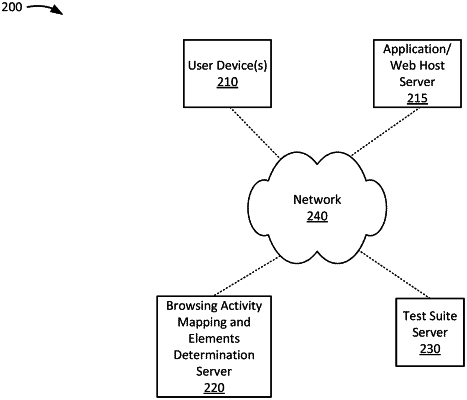| CPC G06F 16/951 (2019.01) [G06F 11/3438 (2013.01); G06N 3/08 (2013.01); G06N 20/00 (2019.01)] | 20 Claims |

|
1. A computer-implemented method comprising:
training, by a computing device, a browser activity mapping machine learning classifier of a mapping data model to recognize web elements from historical user browsing activity based at least in part on a mapping of the historical user browsing activity to at least one known web element so as to produce a trained mapping data model;
tracking, by the computing device, user browsing activity of a user on a webpage having at least one unknown web element;
wherein the user browsing activity comprises at least one user input on the webpage;
wherein the at least one user input is provided via a user computing device associated with the user;
inputting, by the computing device, the user browsing activity into a browser activity mapping machine learning classifier of a trained mapping data model to output an identification of at least one identified web element mapped to the at least one unknown web element, the at least one identified web element being correlated with the user browsing activity;
generating, by the computing device, at least one custom test for the webpage based at least in part on the at least one identified web element;
wherein the at least one custom test comprises one or more computer-based instructions configured to perform at least one operation with the webpage to test at least one of a quality, performance, efficiency, reliability, or operation of the at least one identified web element; and
triggering, by the computing device, the at least one custom test to be performed on the webpage by executing the one or more computer-based instructions so as to determine whether to modify the webpage.
|